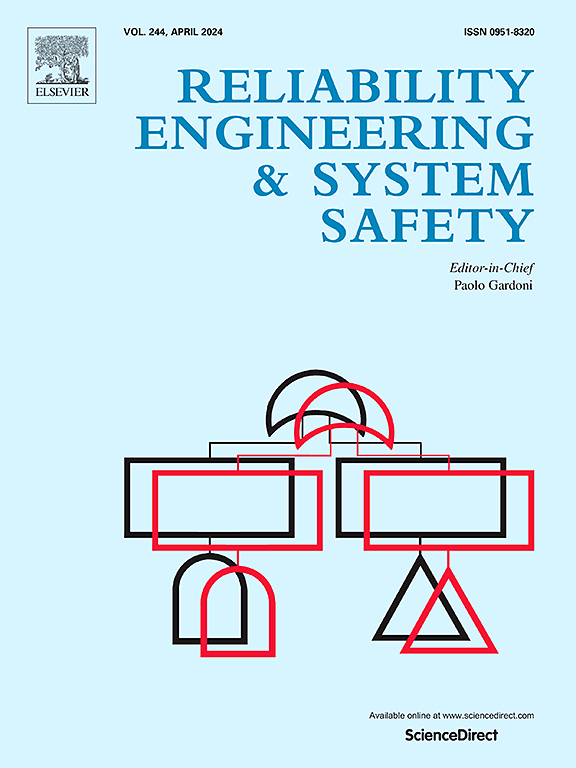基于机器学习和统计方法的综合模型的配水网络风险评估
IF 11
1区 工程技术
Q1 ENGINEERING, INDUSTRIAL
引用次数: 0
摘要
供水管网(wdn)对城市基础设施至关重要,但随着管网的扩大和老化,管道破裂和泄漏的风险也在增加。预测这些风险对于预防事故、改善管理和保护公共安全至关重要。支持向量机(SVM)模型以处理小样本、非线性和高维数据而闻名,非常适合在有限故障数据下评估WDN风险。然而,它面临着一些挑战,比如处理大型数据集、选择最优核函数以及提供清晰的可解释性等。为了应对这些挑战并准确评估管道风险,本研究引入了一种将确定性因子(CF)模型与支持向量机(SVM)相结合的CF-SVM集成模型。CF模型以统计理论为基础,有效地管理了管道故障中由多种因素引起的不确定性。结果表明,CF-SVM模型的AUC为0.92,准确率分别提高了17.95%和12.20%,优于独立SVM和CF模型。该模型有效地将71.31%的故障管道分配到较小的高风险区域(22.96%),提高了准确率和区域适用性。该方法在中国实际无线局域网中的应用证明了其在风险评估和网络安全管理方面的有效性。本文章由计算机程序翻译,如有差异,请以英文原文为准。
Risk assessment of water distribution networks through an integrated model based on machine learning and statistical methods
Water distribution networks (WDNs) are critical for urban infrastructure, but as they expand and age, the risk of pipeline ruptures and leaks grows. Predicting these risks is essential for preventing accidents, improving management, and protecting public safety. The Support Vector Machine (SVM) model, renowned for handling small samples, nonlinearity, and high-dimensional data, is well-suited for assessing WDN risks with limited failure data. However, it faces challenges such as difficulties with large datasets, selecting optimal kernel functions, and offering clear interpretability. To address these challenges and accurately assess pipeline risks, this study introduces an integrated CF-SVM model, combining the Certainty Factor (CF) model with SVM. The CF model, grounded in statistical theory, effectively manages uncertainties arising from multiple factors in pipeline failures. Results show the CF-SVM model outperforms standalone SVM and CF models, with an AUC of 0.92—improving accuracy by 17.95 % and 12.20 %, respectively. The model effectively allocates 71.31 % of faulty pipes to a smaller high-risk zone (22.96 %), enhancing both accuracy and regional applicability. Its application in real WDNs in China demonstrates its effectiveness in risk assessment and network safety management.
求助全文
通过发布文献求助,成功后即可免费获取论文全文。
去求助
来源期刊

Reliability Engineering & System Safety
管理科学-工程:工业
CiteScore
15.20
自引率
39.50%
发文量
621
审稿时长
67 days
期刊介绍:
Elsevier publishes Reliability Engineering & System Safety in association with the European Safety and Reliability Association and the Safety Engineering and Risk Analysis Division. The international journal is devoted to developing and applying methods to enhance the safety and reliability of complex technological systems, like nuclear power plants, chemical plants, hazardous waste facilities, space systems, offshore and maritime systems, transportation systems, constructed infrastructure, and manufacturing plants. The journal normally publishes only articles that involve the analysis of substantive problems related to the reliability of complex systems or present techniques and/or theoretical results that have a discernable relationship to the solution of such problems. An important aim is to balance academic material and practical applications.
 求助内容:
求助内容: 应助结果提醒方式:
应助结果提醒方式:


